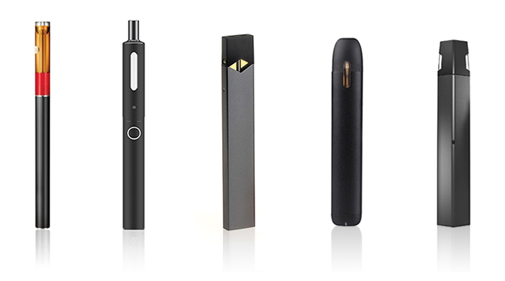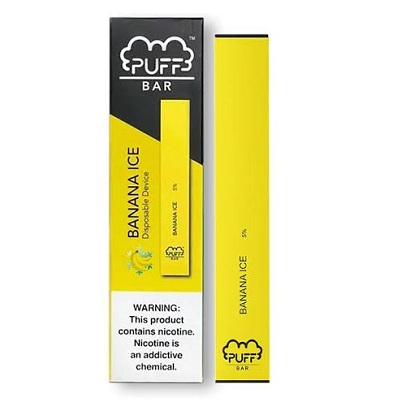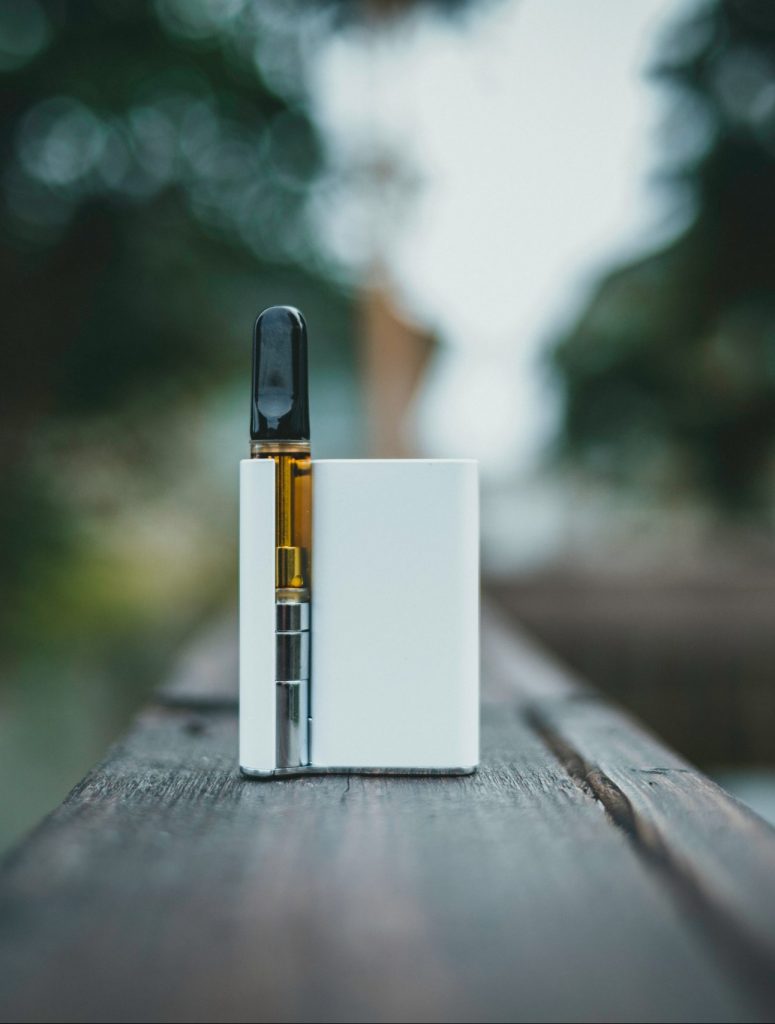Vaping has seen a significant increase in the past few years, with survey data suggesting that prevalence in young people has risen from around 4% in 2021 to 8.6% in 2022. The act of vaping has traditionally been positioned as a safer alternative to smoking, owing to its lack of combustion.
With the rise in high nicotine disposable vapes, we decided to revisit the question ‘is vaping healthier than smoking?’, and also look at the data for both tobacco/ nicotine products and for cannabis products.
Smoking cigarettes vs. vaping
Despite carrying its own risks, vaping or vapourising has often been marketed as a safer alternative to smoking. Although both deliver nicotine to the user, there are differences in the delivery methods that you might not be aware of.
Smoking cigarettes
When an individual smokes, the cigarette is heated to a temperature high enough for combustion to occur and nicotine to be released. However, this releases a number of harmful toxins and carcinogens, responsible for a lot of the harms associated with smoking, which are then absorbed into the lungs.
According to the NHS, smoking is one of the biggest causes of death and illness in the UK and is responsible for around 76,000 deaths a year. To put things in perspective, Dr. Newcombe’s research equates the risks associated with cigarette use with the likes of bomb disposal, deep sea fishing and extreme sports. NHS statistics show that smoking is responsible for every 7 out of 10 cases of lung cancer, as well as a host of other cancers. Other harms include:
- Increased risk of coronary heart disease
- Increased risk of heart attack
- Damage to lungs which causes COPD and pneumonia
- Prolonging of symptoms associated with the common cold, asthma or respiratory tract infections
Of course smoking doesn’t just cause harm to the user, but also harms those who breathe in secondhand smoke, also known as passive smoking. This increases their risk of developing the same smoking-related conditions.
Vaping tobacco products
Vaping has since been positioned as a less harmful alternative to smoking cigarettes. E-cigarettes heat a liquid combination of nicotine (extracted from tobacco), flavorings and other chemicals to create an aerosol. When an individual uses a vape, the liquid inside is heated to a much lower temperature than with cigarettes. This causes vapourisation, rather than combustion, which converts the liquid into a vapour which is then inhaled.

Electronic nicotine vapes

E-cigarette liquids called ‘Unicorn Cakes’
As the vapour doesn’t contain the same harmful chemicals (or as many chemicals) as cigarette smoke, vaping has been viewed as a safer option to smoking, and has even been posited as an effective method for helping people cut down or stop smoking altogether. Going back to Dr. Newcombe’s work, he equates vaping nicotine with the risks associated with computer games, toasters and fireworks.
However, this isn’t to say that there aren’t risks with vaping. The effects of e-cigarette fluids on lung cells have been studied by researchers at Birmingham University. The study reveals that when the nicotine-infused liquids used in e-cigarettes are vaporized, they become potent cell killers. Specifically, the study focused on the impact on alveolar macrophages, which are crucial white blood cells responsible for clearing the lungs of harmful substances. These macrophages patrol the tiny air sacs of the lung, known as alveoli, and help in breaking down dust, bacteria, and other particles that could cause damage. After being exposed to the different types of e-cigarette fluids for 24 hours, the researchers observed that the most significant effects were seen in liquids that had been vaporized and then condensed, simulating the buildup of substances in the lungs. Significantly fewer macrophages remained fully functional after exposure to the vaporized fluids, regardless of whether the liquids contained nicotine or not. The compromised ability of these cells to engulf bacteria, a process known as phagocytosis, suggests that e-cigarette users may experience a higher likelihood of developing lung infections. Furthermore, the impaired function of alveolar macrophages may also make these infections more challenging to treat effectively. Overall, these findings demonstrate how e-cigarette fluids can adversely affect lung cells, impairing the immune system’s ability to clear the lungs and prevent harmful chemical accumulations.
Between May 2016 and January 2021, the Medicines and Healthcare products Regulatory Agency (MHRA) received 231 reports of 618 adverse reactions related to vaping products. Moreover, Cancer Research UK advises that vaping can cause throat and mouth irritation, headaches, nausea and coughing, although there is not yet enough evidence to confirm the longterm effects of vaping.

A disposable electronic cigarette of the brand ‘Puff Bar’, with ‘banana ice’ aroma and 5 % nicotine.
The UK has recently seen an increased uptake in the number of disposable vapes being sold, with sales up by £434m. Often sold in brightly coloured packaging with enticing and fruity flavours, the rise in teen vaping has been attributed to the availability and accessibility of disposable vapes.
The increased use of vapes amongst young people poses risks specific to this age group. Research suggests that the rise in young people taking up vaping is responsible for a number of health harms such as lung injury, cardiovascular, immunologic and neuro-developmental effects.
Interestingly, this demographic often reports taking up vaping, despite having never smoked (or smoked regularly) previously. This suggests that vapes no longer fulfil the main purpose they were once marketed for – smoking cessation. Rather than being used as a tool for harm reduction, the rise in teen vaping is harm-producing in and of itself.
Authorities are also beginning to warn about the dangers of counterfeit disposable vapes that are increasingly appearing in shops on the UK high street. In December 2022 alone, more than 300,000 counterfeit vapes were seized by Kent Trading Standards, with the focus shifting from retail outlets to those higher up the supply chain. Such products can have up to 10 times the legal limit of nicotine, and some even contain harmful chemicals, such as lead and formaldehyde.
Smoking cannabis vs. vaping cannabis
Cannabis is another substance that falls into the dichotomy of smoking vs. vaping. Although smoking cannabis is the main method for recreational consumption, in the UK it’s illegal to smoke prescribed cannabis flower. Due to this, many patients use a dry herb vapouriser to take their prescription.

An example of a cannabis vape that uses a cartridge
Cannabis is also vaped recreationally (and medically) in the form of THC extracts and oils that are placed in cartridges or carts, not just through a dry herb vapouriser where ground up flower is used. Again, these methods differ in terms of delivery and risks.
Smoking cannabis
Smoking cannabis works in much the same way as smoking a cigarette in terms of delivery mechanisms, although the smoke is often held in the lungs for longer. Ground up cannabis flower is heated to a temperature high enough for combustion to occur, and the smoke is then inhaled.
Despite cannabis smoke containing a number of cannabinoids and terpenes, some of which have been found to have a positive therapeutic effect on the body, smoke from tobacco and cannabis contain many of the same carcinogens and tumor promoters. However cannabis smoke has not been causally linked with tobacco related cancers such as lung, colon or rectal cancers. This is especially true for the European context of cannabis use, as people from this region tend to mix their cannabis with tobacco.
Research suggests that smoking cannabis is associated with a number of health risks, such as cough, excessive mucus production and a weakened immune system. As cannabis smoke is held in the lungs for longer, it also puts users at increased risk for exposure to tar.
Vaping cannabis
Again, vaping cannabis works in much the same way as traditional nicotine vaping. Many medical cannabis users who vape use a dry herb vapouriser which heats the cannabis flower to a temperature where cannabinoids can be inhaled via vapour, while some use vape pens with cartridges that contain extracts or oil.

This person is grinding up flower to put into a handheld vaporiser. Source: Drug Policy Alliance
Similarly, this vapour doesn’t create the same harmful toxins as smoking does in cannabis, and so has been positioned as a safer consumption method, and as such is the only legal way of consuming medical cannabis flower. Despite this, the long-term impacts of vapourising cannabis are still largely unknown due to a lack of meaningful research investigating the area.
There is a concern that vapourising cannabis may not effectively reduce the natural bacteria and fungi present in the plant and the pesticides it is exposed to. This increases risks for patients who are immunocompromised or vulnerable to infection. To reduce this risk, many medical cannabis products go through a process called ‘irradiation’, which helps to kill microbes present in cannabis flower.
The arguments surrounding the safety of vaping vs. smoking are anything but clear cut. On the whole, the evidence suggests that vaping carries less risks than smoking either tobacco or cannabis. However, vaping tobacco with no prior history of cigarette use exposes users, increasingly young people, to harms that they otherwise wouldn’t have encountered. Research into the long-term effects of vaping both nicotine and cannabis is thin on the ground, and so there is a real need for more robust scientific investigation in this multifaceted area.
This piece was written by Volteface Content and Media Officer Megan Townsend. She is particularly interested in the reform of drug legislation, subcultural drug use and harm reduction initiatives. She also has an MA in Criminology from Birmingham City University. Tweets @megant2799.
